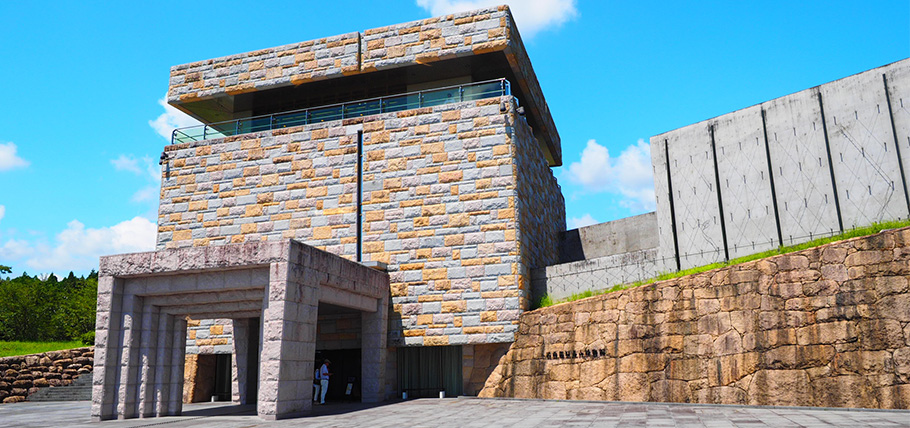Half-day Mythology Tour] Western Capital Course (4 hours)

Miyazaki is known as the "Home of Myths and Legends," and there are many places that were the setting of myths introduced in Japan's oldest historical book, Kojiki (Record of Ancient Matters), which evoke the romance of ancient times. Why don't you visit historical sites of myths and legends, explore the roots of the Japanese people by thinking back to ancient times, and regain the spirit of Japan that modern people have almost forgotten? Our professional staff will wholeheartedly guide you into the world of ancient romance.
Minimum number of applicants: 2
departure time
| 1 | Departure 8:30 Return 12:30 (tentative) |
|---|---|
| 2 | Departure 13:30 Return 17:30 (tentative) |
Course Content
| 8:30 (13:30) | Departure: Sheraton Grande Ocean Resort or Miyazaki Station East Exit |
| 9:20 (14:20) | (1) Toman Shrine (2)Kiki Path (car window) (3)Saitobaru Tomb (Oni no Iwaya) |
| 10:10 (15:10) | (4)Konohana-kan |
| 10:40 (15:40) | (5)Miyazaki Prefectural Archaeological Museum |
| 12:30 (17:30) | Arrival: Sheraton Grande Ocean Resort or Miyazaki Station East Exit |
Tour Fees
one person7,500Yen (incl. tax)Highlights of this course
-
(1) Toman Shrine
This shrine is dedicated to Konohanasakuyahime, the consort of Ninigi no Mikoto, the heavenly grandson, and is called Tsumamangu Shrine or Tsumamangu Shrine.
The deity Kihanasakuyahime was the princess of Oyamazumi no Mikoto, and her marriage to Ninigi no Mikoto was officiated by Kotokatsukunikatsunagasa, the first formal ceremony in Japan to be held in honor of the Candle. The shrine has been revered since ancient times for the joy of marriage.
The mound in front of the Saitobaru Goryo Reference Site is said to be the mausoleum of the shrine's deity, Konohanasakuyahime (Princess Konohanasakuyahime). -
(5) Archaeological Museum
This field museum makes use of the Saitobaru tumulus cluster. The building is designed to resemble the tombstones and stone chambers of ancient burial mounds. The museum does not have permanent exhibits, but instead features permanent and new exhibits that directly convey ongoing archaeological research. -
Ishinuki Shrine, Ishinuki Stairway
Ishinuki Shrine enshrines Oyamatsuminokami, the father of Konohanasakuyahime, the god of the mountains, and is said to be the place where Oyamatsumi, who promised an ogre that he would give his daughter in marriage if he could complete a rockery in a night, took a piece of stone from the rockery that the ogre had completed and threw it. The stone is placed at the entrance of the approach to the shrine.
When approaching the slope on the way from Ishinuki Shrine to Saitobaru Kofun, there is a long staircase (about 170 steps) on the steep slope on the left side, commonly called "Ishinuki Staircase". Ascending this staircase, you will see the vast tombs of Saitobaru. The Yakult Swallows used these stairs for training during their camp. -
Oni no grotto, Otoko no saho mound, Ono no saho mound
It is said that an evil demon who wished to marry Konohanasakuya Hime, a demoness, was told by Oyamatsuminoami, Hime's father, to build a rock house in one night, which he completed. There is a large gap in the ceiling of the path leading from the entrance of the burial mound to the first chamber, which is said to be the remains of a piece of stone removed by Oyamatsumino wolf.
The mound is said to be the largest scalloped burial mound in Japan at 155 m in length, and the mound is the largest in Kyushu at 176 m. The mound was designated by the Imperial Household Agency in 1895 as the mausoleum of Niniginomikoto and the tomb of Konohanasakuyahime. -
detached room
It is said that this is the site of a maternity house built by Konohanasakuyahime for childbirth. When Niniginomikoto suspected that she had carried a child in just one night, Konohanasakuyahime entered the birthhouse without a door to prove her innocence, and gave birth to three children in a blazing fire. -
Tomb of Oyamazuminushi no Mikoto
Located on the Ishinuki Stairway leading from Ishinuki Shrine to the Saitobaru Plateau, this is a front-recessed circular tomb said to be the mausoleum of the mountain god Oyamatsumino-mikoto. There are only a few tombs in the Saitobaru tumulus cluster that have a name, and a Shinto ritual is held in front of the mausoleum during the annual autumn festival of Ishinuki Shrine, which enshrines Oyamatsuminokami.